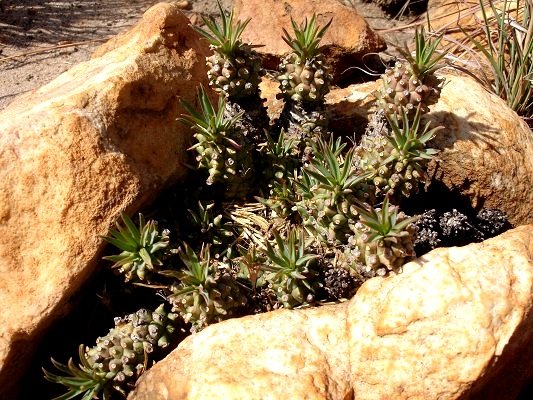Euphorbia davyi

Author: Ivan Lätti
Photographer: Judd Kirkel Welwitch
Euphorbia davyi is a dwarf succulent based on a thick underground caudex that tapers conically downwards to a narrow point from which a few roots grow. Above-ground it is vingerpol-like, a number of short, above-ground, thick finger or tiny pineapple-shaped stems topped with leafy rosettes form a dense, flattish disc or shallowly dome-shape. The ephemeral leaves, narrow, bluish and channelled, grow in about three rings on the new growth of each stem-top, the older stem parts becoming leafless as the leaves drop off.
The above-ground stems proliferate slowly by annual additions, their height or length coordinated to maintain the disc or dome. The stems are covered in conical surface protrusions or tubercles, becoming bare and conspicuously uneven after the leaves drop off. The tubercles are arranged in a semi-regular pattern. The central area of the above-ground part of the plant is clear of stems in some plants. The stems are arranged in a growing number of rings around the centre or open patch.
The distribution of the plant is in the Gauteng, Limpopo and North West, also in southern Africa, notably Botswana and Zimbabwe.
The habitat is sandy flats in grassland and savanna. The species is not considered threatened in habitat early in the twenty first century (Frandsen, 2017; iNaturalist; JSTOR; www.ville-ge.ch; http://redlist.sanbi.org).

